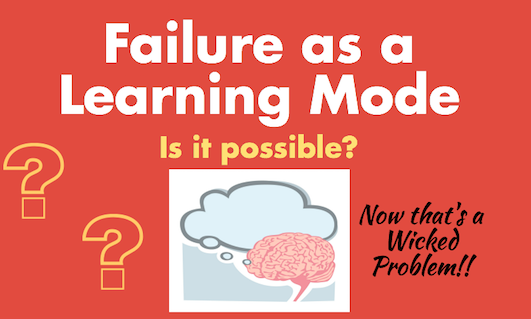I decided to create a WeVideo to share my thoughts pertaining to passion, curiosity, questioning and technology. Check it out! 🙂
https://www.wevideo.com/view/719619362
It was very interesting to read Thomas L. Friedman’s (2013) article, It’s P.Q. and C.Q. as Much as I.Q., and I was very intrigued with his notion of people needing to be passionate and curious, not just intelligent. To be successful in today’s world, people need to embrace being lifelong learners. We have to keep challenging ourselves and continue to keep our curiosity levels high.
I believe that Friedman’s ideas correlate with Warren Berger’s (2014) ideas in his book, A More Beautiful Question. Berger states, “Part of being able to tackle complex and difficult questions is accepting that there is nothing wrong with not knowing. People who are good at questioning are comfortable with uncertainty” (p. 186). If you are truly a passionate and curious person, then you shouldn’t be afraid to ask hard and daunting questions. If you stay in the land of certainty at all times, are you challenging yourself? Are you raising your P.Q. and C.Q. levels? Berger further says, “…it’s common to think about the unknown and get an unsettling feeling in the stomach. A questioner must come to terms with that sensation the way an actor handles performance anxiety” (p. 187). I believe that in order to come to terms with the uneasy feeling, and to feel confident when undergoing passionate curiosity, a person needs to be an a safe and supportive environment.
I believe my classroom is an example of this environment. Hopefully my students feel supported and are comfortable with asking questions and exploring their passions and curiosities. This is why I decided to include the “Learn From Your Mistakes” video clip in my WeVideo. If students know that it’s OK to make mistakes, they will be more confident when exploring and questioning. As an educator, I also need to inspire my students and give my students opportunities to have meaningful learning experiences. This is why I included the 3 pictures of my students from this school year having meaningful experiences.
Furthermore, I specifically showed Berger’s (2014) book and a clip of Berger talking about questioning because I learned a lot from him and I want to make sure that I keep his ideas at the forefront of my mind when I continue to explore questioning in my classroom and in my own life. I will make sure to partake in appreciative inquiry and to concentrate on asking positive questions. Berger mentions, “Strength-based questioning focuses on what is working in our lives – so that we can built upon that and get more out of it” (p. 190). I will be sure to focus on strengths in my personal life and in my professional life.
Finally, I also decided to show an image and a video clip of TPACK in my WeVideo. When creating experiences in my classroom, I need to consider the context, the learning purpose, and the learning process for my students. I want my students to be able to strengthen their P.Q. and their C.Q. so I need to make sure I have a framework that can help them do that. I believe that following the TPACK model will help me to set my students up for success, and will help my students build on their curiosities!
I look forward to continuing to embody P.Q., C.Q., failure, and questioning in my classroom and in my life. Thanks CEP 812 for the helpful tools and information to make me a stronger educator!
References:
Amenclinicsphotos ac. (2014, June 30). Brain Thought Bubble [Digital image]. Retrieved July 24, 2016, from https://www.flickr.com/photos/125892716@N05/14583653246
Berger, W. (2014). A more beautiful question: The power of inquiry to spark breakthrough ideas. New York: Bloomsbury Publishing.
Berger, W. (2013). What Kills Questioning? (Book trailer for A MORE BEAUTIFUL QUESTION by Warren Berger). Retrieved August 17, 2016, from https://www.youtube.com/watch?v=dey1Rm5gUxw
Big Think. (2014). Questions Are the New Answers, with Warren Berger. Retrieved August 17, 2016, from https://www.youtube.com/watch?v=5ALlGU2GYbk
Friedman, T. L. (2013). It’s P.Q. and C.Q. as Much as I.Q. Retrieved August 17, 2016, from http://www.nytimes.com/2013/01/30/opinion/friedman-its-pq-and-cq-as-much-as-iq.html?_r=0
M. (2013). TPACK in 2 Minutes. Retrieved August 17, 2016, from https://www.youtube.com/watch?v=FagVSQlZELY
Reveilleau, G. (2014, April 18). Learn From Your Mistakes. Retrieved March 19, 2016, from https://www.youtube.com/watch?v=gf-uAGj4DuI
The Bakken Museum. (2013, August 15). Inventors-2-25-2012-149 [Digital image]. Retrieved March 19, 2016, from https://www.flickr.com/photos/thebakkenmuseum/9515163579/in/photostream/
Tpack. (2015, April 15). Retrieved August 17, 2016, from https://commons.wikimedia.org/wiki/File:Tpack.jpg
Vergés, X. (2011, June 24). Grow your people [Digital image]. Retrieved March 19, 2016, from https://www.flickr.com/photos/xverges/5866575567

